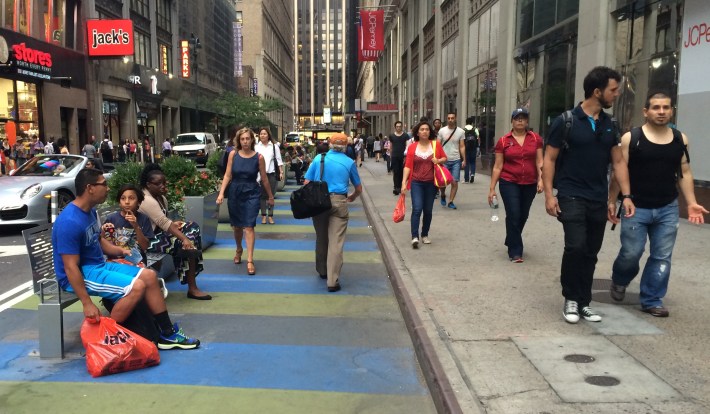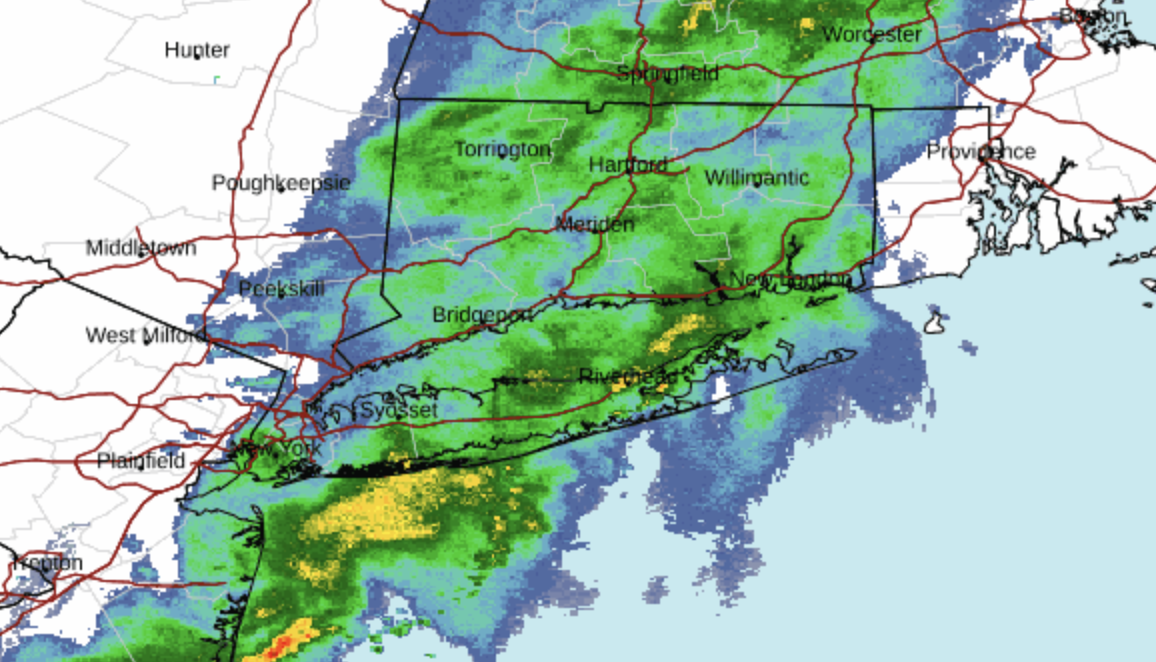
Normally Streetsblog would just ignore Steve Cuozzo's rant yesterday about the evils of giving New Yorkers more room to walk and sit. But yanking out public space is a surprisingly credible threat these days, so here goes.
If you missed it, the nut of Cuozzo's piece is that because he saw some homeless people sitting on benches in the temporary sidewalk expansion on 32nd Street by Penn Station, "the bad old days are back." This fits neatly into the Post's campaign to paint #deBlasiosNewYork as a place where decent folk are constantly menaced by aggressive lunatics on the street and you ought to be cowering inside all the time.
It also depends on stupendous ignorance of how the reclamation of public spaces helped New York turn the corner on "the bad old days."
Cuozzo singles out "the 'pedestrian'-besotted 34th Street Partnership" -- the local Business Improvement District -- for backing the 32nd Street sidewalk expansion. The 34th Street Partnership is also responsible for foolishness like restoring Herald Square and maintaining sidewalk benches. It has an interesting intellectual lineage -- the organization's founder, Dan Biederman, is a disciple of the influential urbanist William H. Whyte.
Whyte's 1980 book, The Social Life of Small Urban Spaces, is full of ideas that guide the management of the city's public spaces to this day. One of his key insights was that attempts to keep certain people out of public spaces were woefully misguided. "So-called ‘undesirables’ are not the problem," he wrote. "It is the measures taken to combat them that is the problem."
Basing decisions about public space solely on the desire to exclude is tantamount to abandoning a public space altogether. Make a place unsittable, and you'll prevent homeless people from sitting there. But then you'll repel everyone else too.
Whyte's theories about public space design and management -- that "the idea is to make all of a place usable for everyone" -- helped transform Bryant Park from a symbol of New York's decay to a flourishing square in the heart of Midtown. His influence remains evident today in the city's plaza program, which is as much about public space management as the repurposing of street space, and in the Midtown BIDs, which have been the strongest backers of the new car-free public spaces along Broadway.
You can hear echoes of Whyte in Times Square Alliance chief Tim Tompkins' recent defense of the Broadway pedestrian plazas. "Sure, let's tear up Broadway! We can’t govern, manage or police our public spaces, so we should just tear them up... That’s not a solution. It's a surrender."





